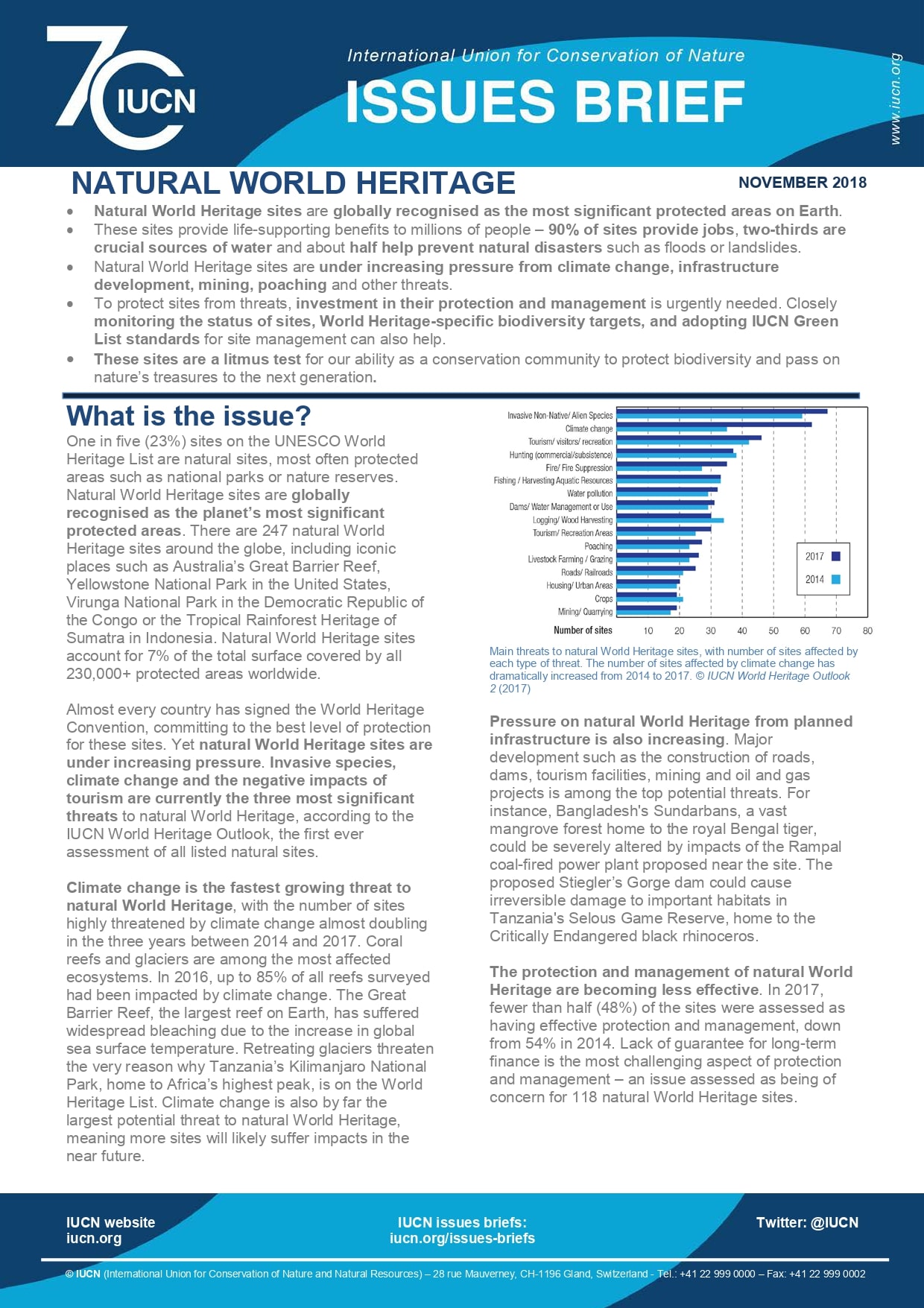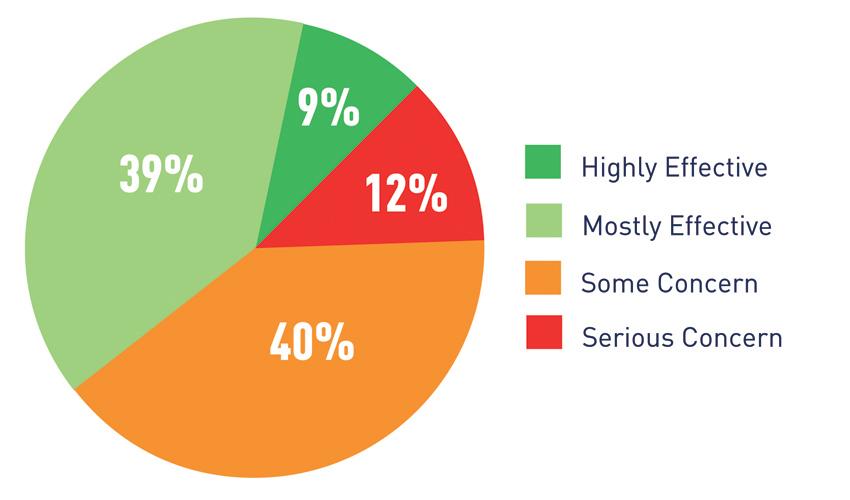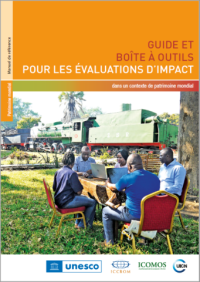What is the issue?
One in five (23%) sites on the UNESCO World Heritage List are natural sites, most often protected areas such as national parks or nature reserves. Natural World Heritage sites are globally recognised as the planet’s most significant protected areas. There are 252 natural World Heritage sites around the globe, including iconic places such as Australia’s Great Barrier Reef, Yellowstone National Park in the United States, Virunga National Park in the Democratic Republic of the Congo or the Tropical Rainforest Heritage of Sumatra in Indonesia. Natural World Heritage sites account for 8% of the total surface covered by all 230,000+ protected areas worldwide.
Almost every country has signed the World Heritage Convention, committing to the best level of protection for these sites. Yet natural World Heritage sites are under increasing pressure. Invasive species, climate change and the negative impacts of tourism are currently the three most significant threats to natural World Heritage, according to the IUCN World Heritage Outlook, the first ever assessment of all listed natural sites.
Climate change is the fastest growing threat to natural World Heritage, with the number of sites highly threatened by climate change almost doubling in the three years between 2014 and 2017. Coral reefs and glaciers are among the most affected ecosystems. In 2016, up to 85% of all reefs surveyed had been impacted by climate change. The Great Barrier Reef, the largest reef on Earth, has suffered widespread bleaching due to the increase in global sea surface temperature. Retreating glaciers threaten the very reason why Tanzania’s Kilimanjaro National Park, home to Africa’s highest peak, is on the World Heritage List. Climate change is also by far the largest potential threat to natural World Heritage, meaning more sites will likely suffer impacts in the near future.







